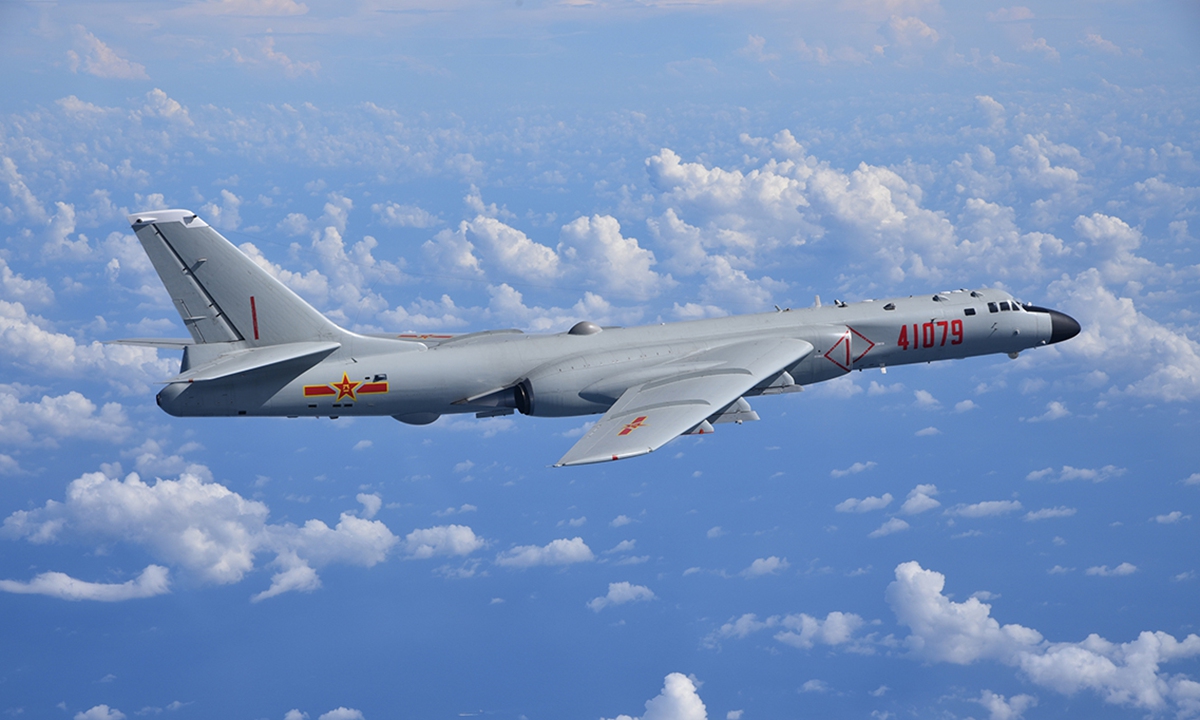China can powerfully counter US threats in first, second island chains

Photo: http://www.81.cn/
A viral video of an H-6K bomber released by the People's Liberation Army (PLA) Air Force on Saturday has made headlines in many Western media outlets. They allege that the video shows "simulated attack on a US Air Force base on Guam." This is over-interpretation.
The video actually lucidly demonstrates China's capabilities to launch counterattacks. It is proof of the PLA's resolve to deal with any military provocation. The scene of exploration in it is designed for those who are up to something no good. When a certain country points a gun at China, sends aircraft to approach its territory, takes China as target of simulated attacks, and repeatedly provokes China, China will certainly respond with a display of what we are capable of.
The video is merely an exhibition of China's counterbalance capabilities. It doesn't mean it is targeting certain troops. Nor will it initiate an attack against a certain position, or specifically deter a certain country.
Nonetheless, if the US military sends bombers from its Pacific bases to deter China and bring direct threats, the PLA's H-6K bombers are indeed capable of launching effective counterattacks against these bases, frontier deployments, and forward bases. This is what the PLA Air Force's video wants to convey, in my take.
Why have many Western media outlets speculated that the exploration scene in the video is at Andersen Air Force Base on Guam? The reason is simple: They need an imaginary target when they analyze the PLA Air Force's long-range strike capabilities. This is especially true of the operational range of H-6K bombers. Given the military games between China and the US at present, some media outlets, particularly Western ones, involuntarily believe Guam �?the hub of US military operations in the second island chain �?is the ideal reference for their evaluation.
However, judging from the information released by the PLA, we can see it hasn't explicitly or apparently pointed to a certain country or target. China's military operations are defensive in nature. It only pursues defensive counterattack strategies.
If China is not provoked or threatened, it will not engage in direct counterattack like what is showed in the video. But if anyone greatly endangers China's national defense security and strategic security, or even takes direct actions against the country, then its countermoves will definitely be extraordinarily fast - and in rapid real time.
Currently, the US has repeatedly provoked China. Yet I don't think the US will dare open fire recklessly. Now, the two major powers are still at a stage of contests and games. The atmosphere is not tense enough to trigger direct conflicts, or even a war.
China's H-6K bombers can further extend operational ranges. These aircraft can carry cruise missiles with ranges over 1,000 kilometers. This means they can strike precise targets in either the first or second island chains. To show China's capability of strategic counterbalance is, to some extent, a warning to other countries to not provoke at China's doorsteps.
When it comes to the second island chain, the US takes an upper hand in terms of military strength. It can enhance its offense and defense abilities in the area with aircraft carrier strike groups, not to mention that the country possess bombers of world-leading quantity and quality. But despite a strong US military presence in this sphere, we must emphasize that China has enough counterbalance and counterattack measures to mitigate risks.
Although China's overall naval and air forces strength still have a gap with those of the US, if Washington poses a direct threat to China's national defense security and strategic security from the military bases in the second island chain, China is fully capable of making them pay corresponding prices. In this sense, China may need to further strengthen its strategic power projection capabilities and combined naval and air force combat capabilities.
The author is a Beijing-based military analyst. opinion@globaltimes.com.cn